

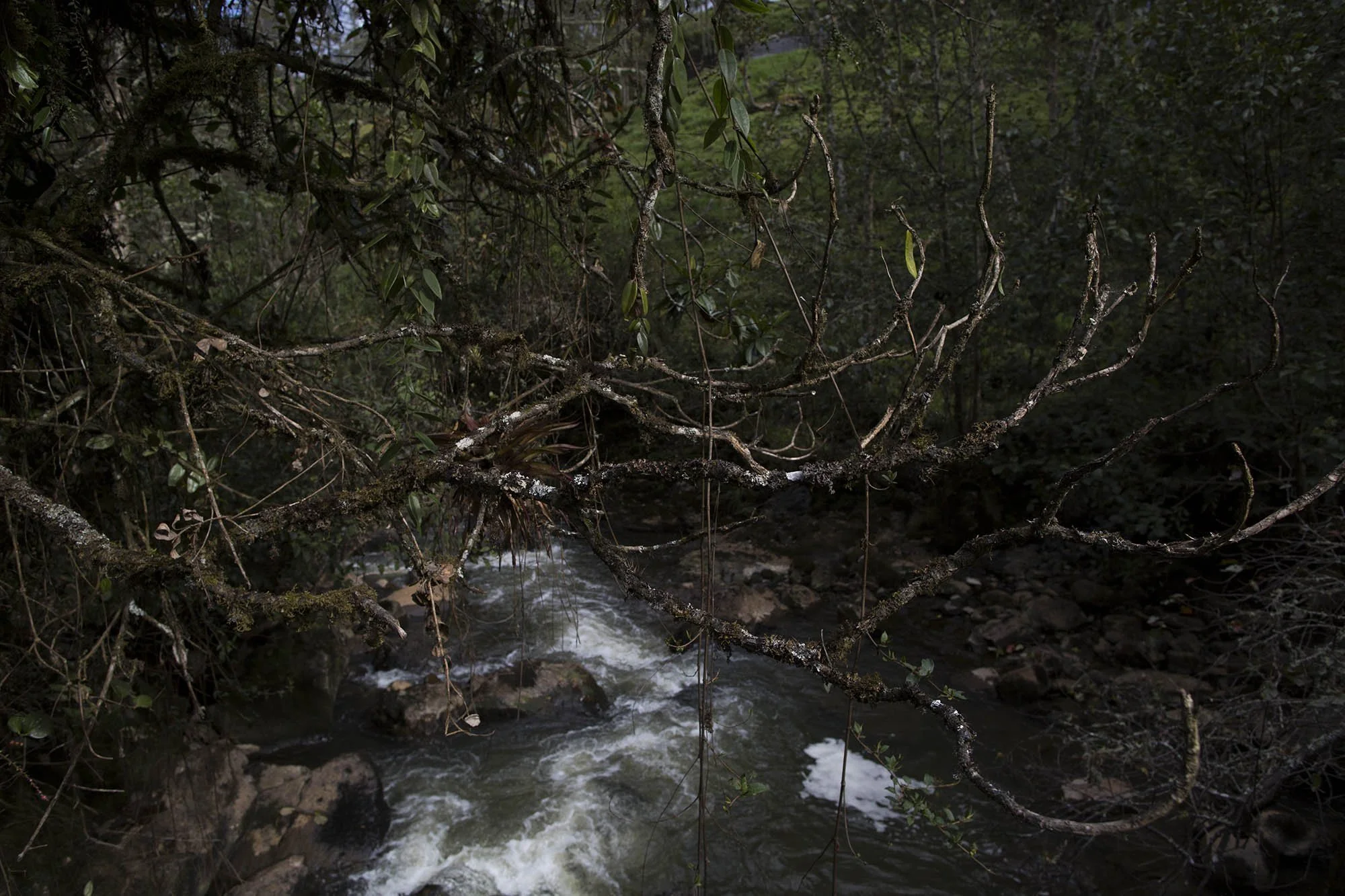

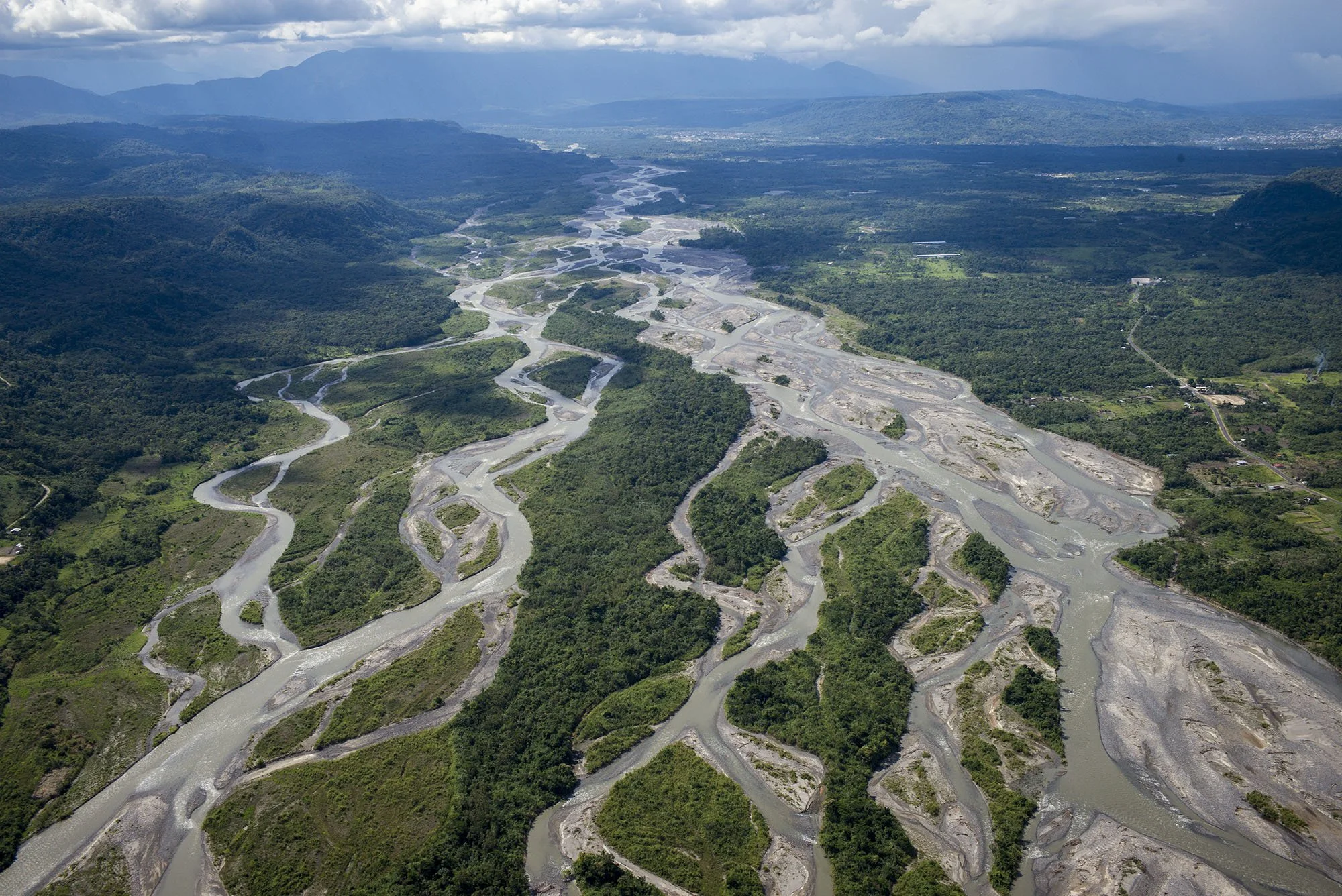
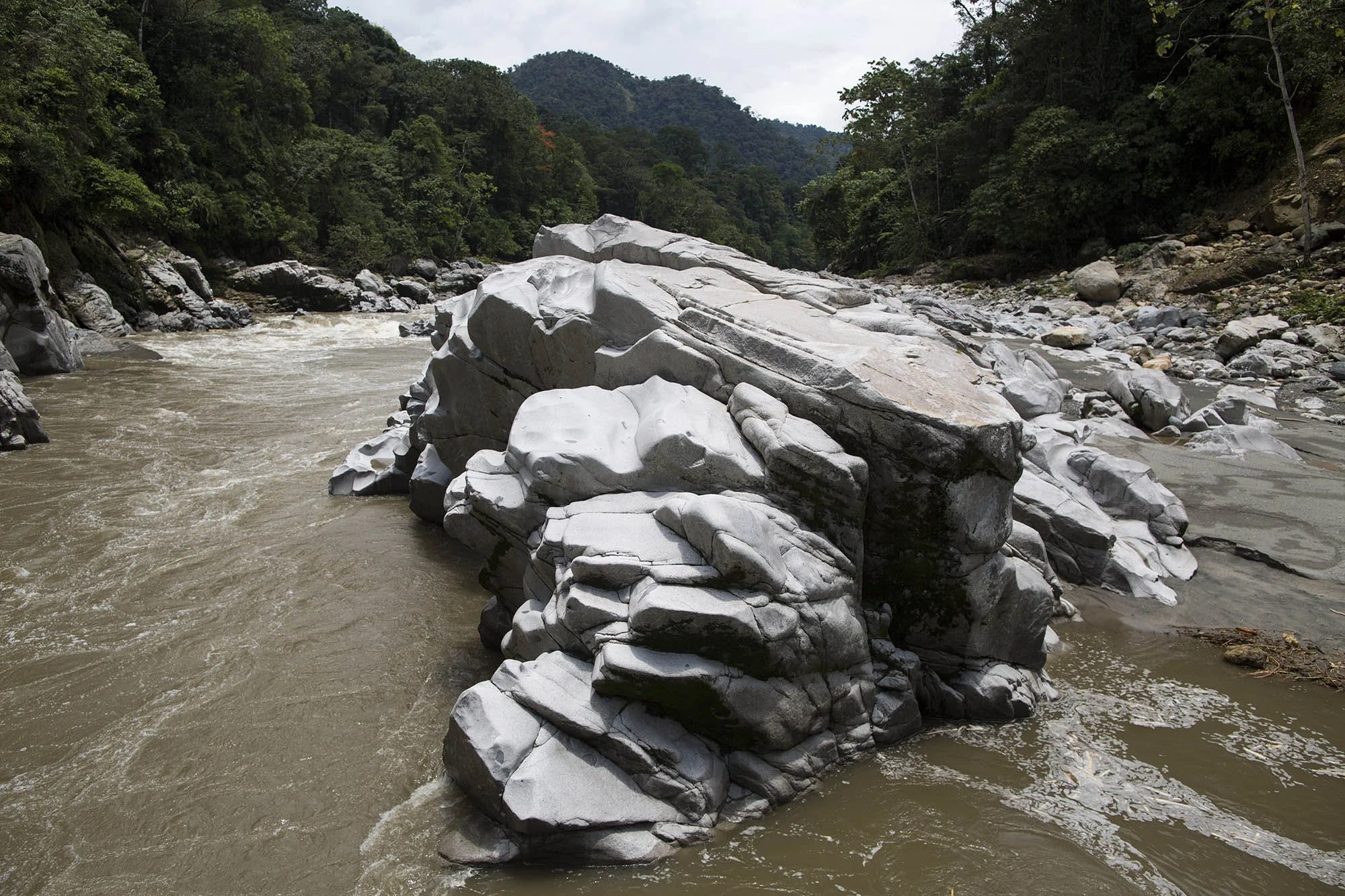
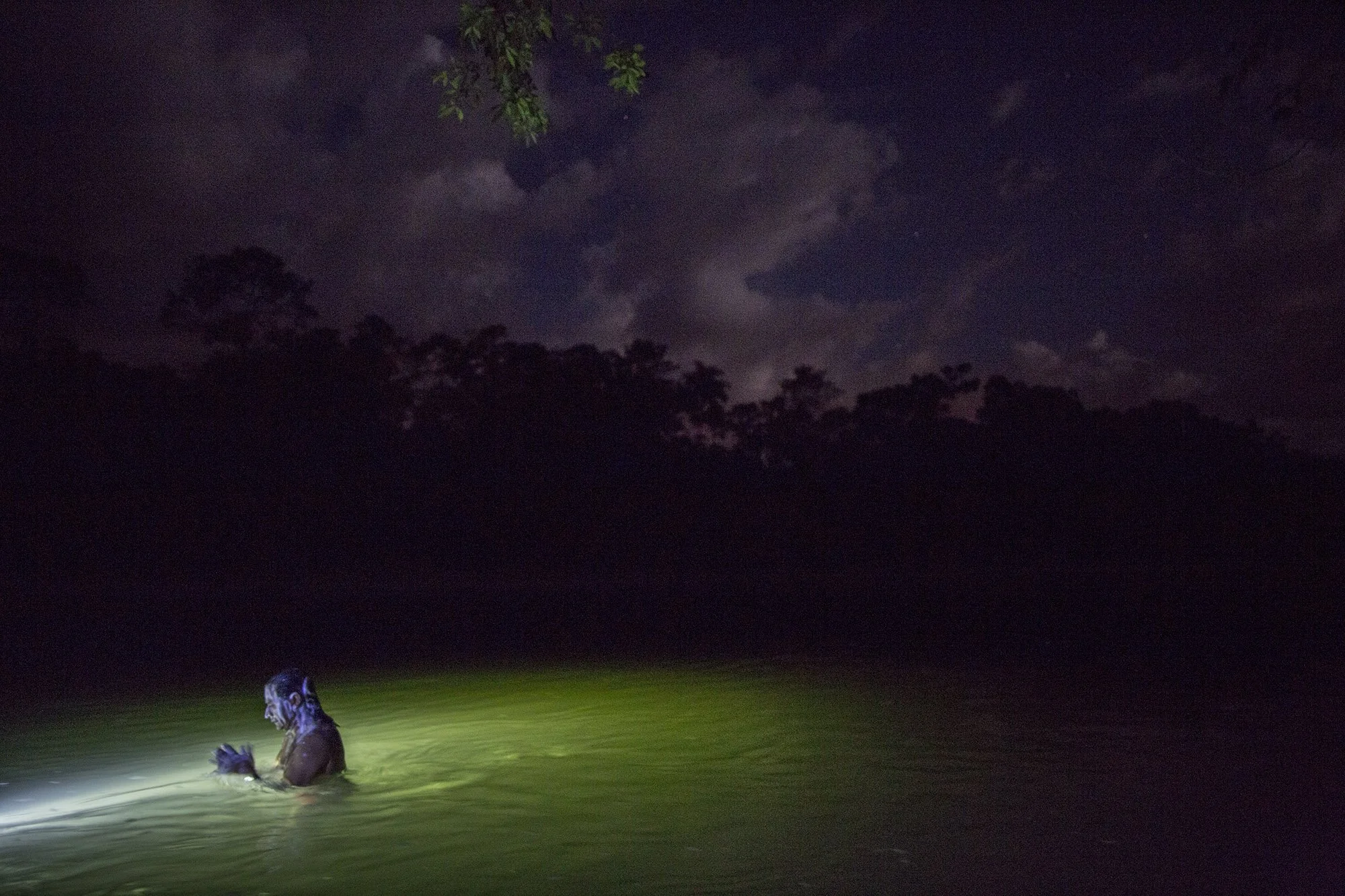

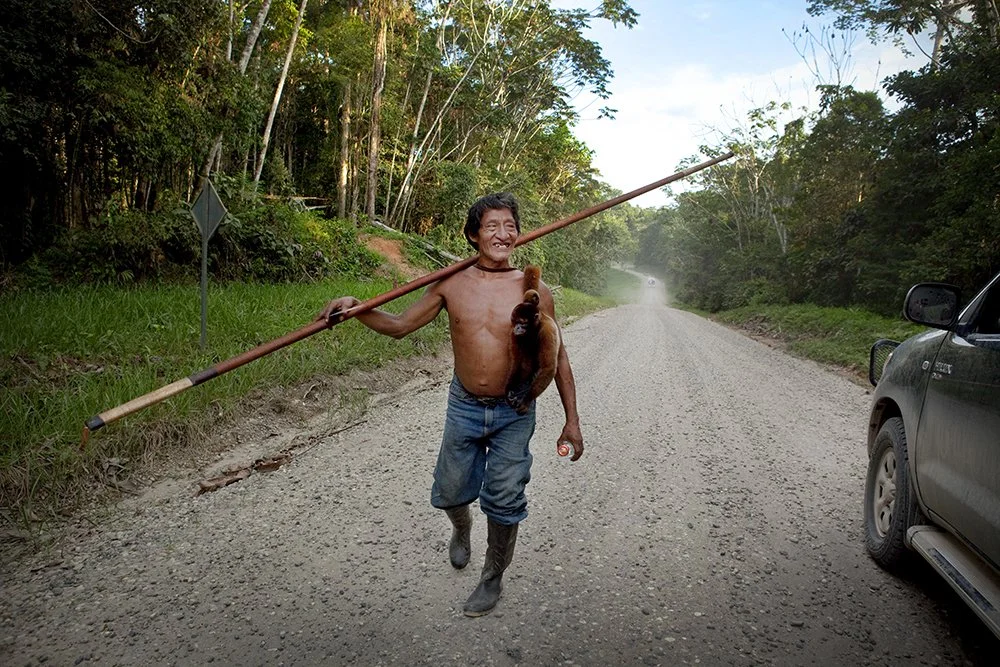



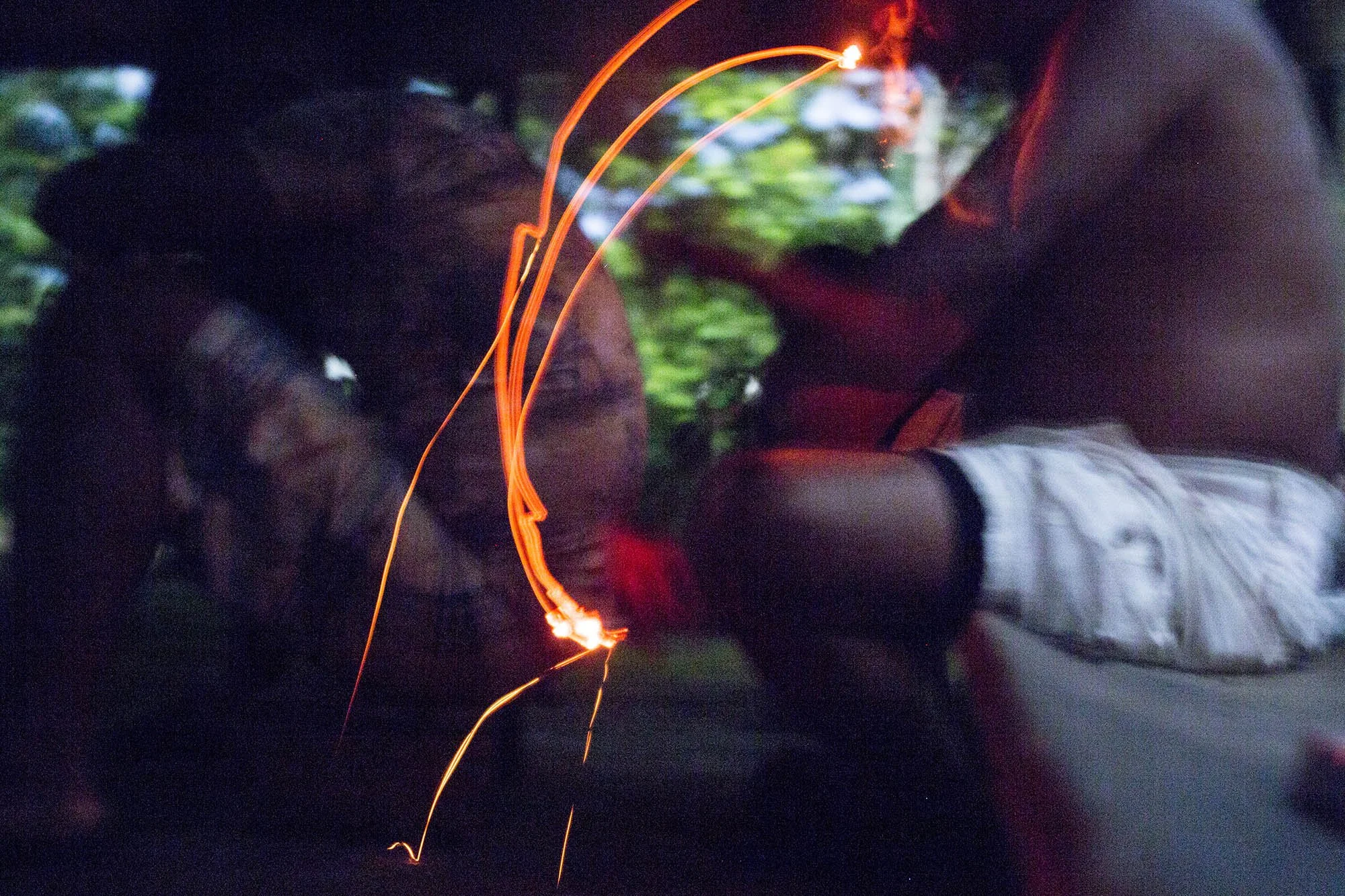


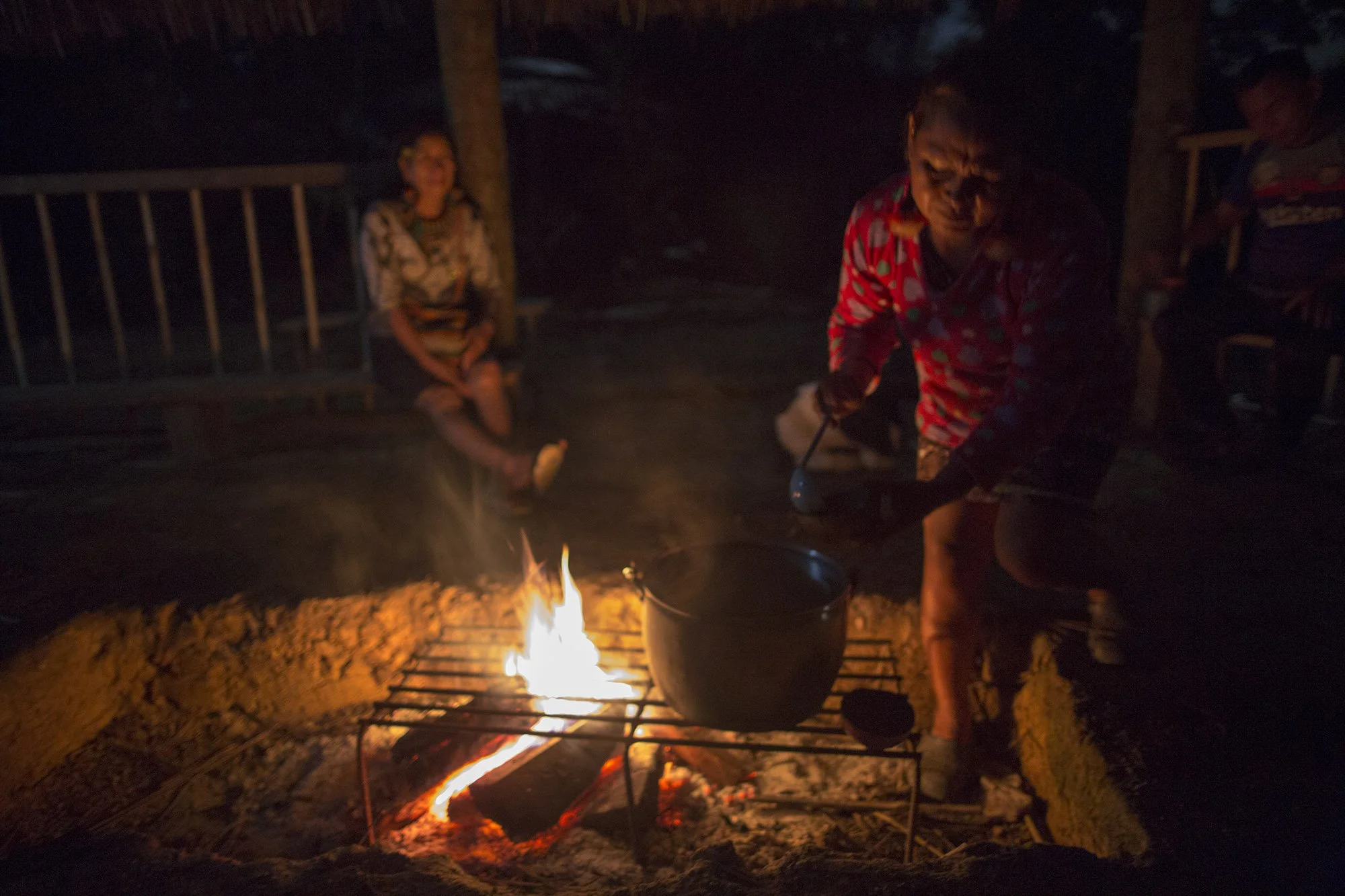
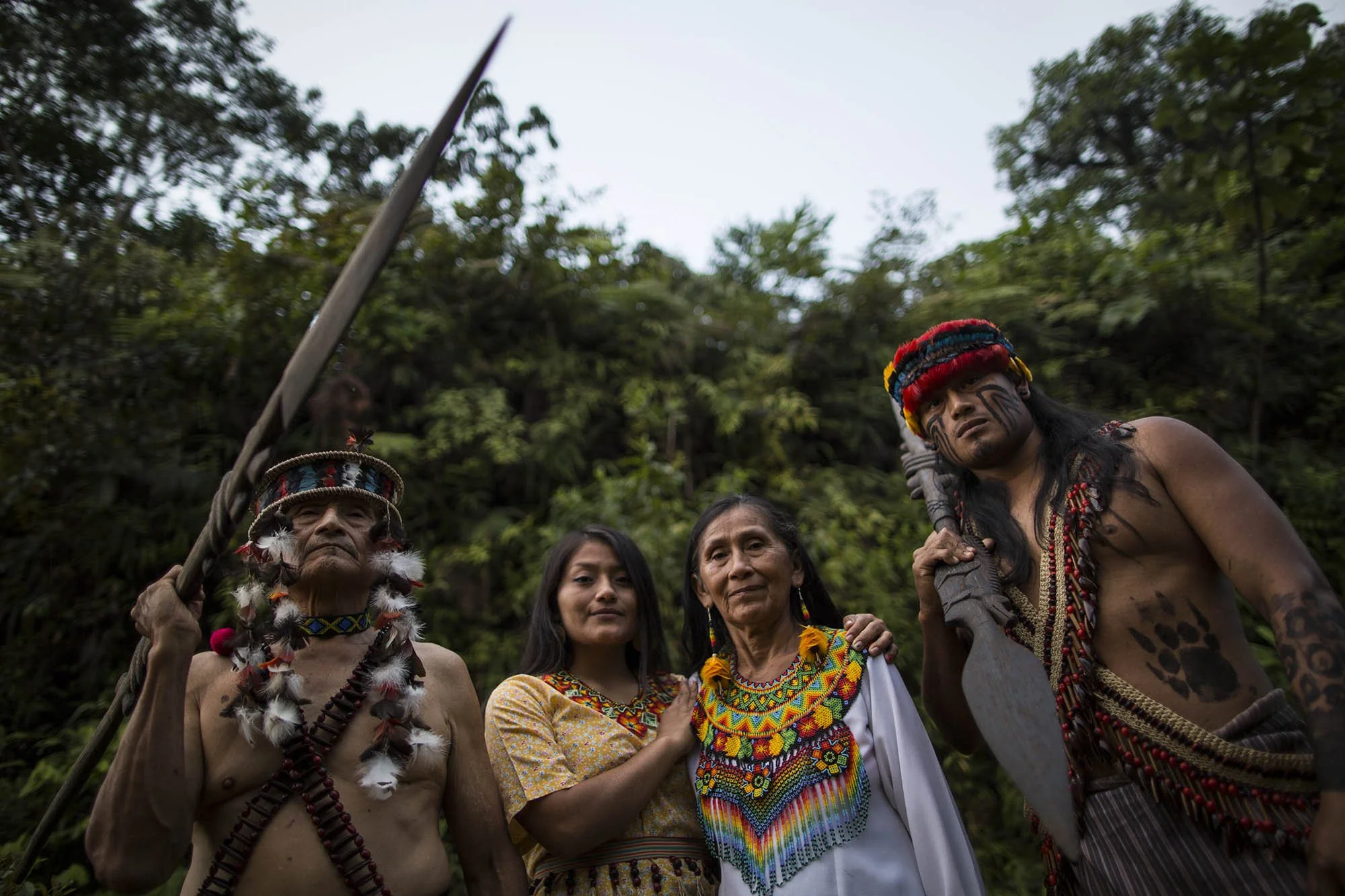



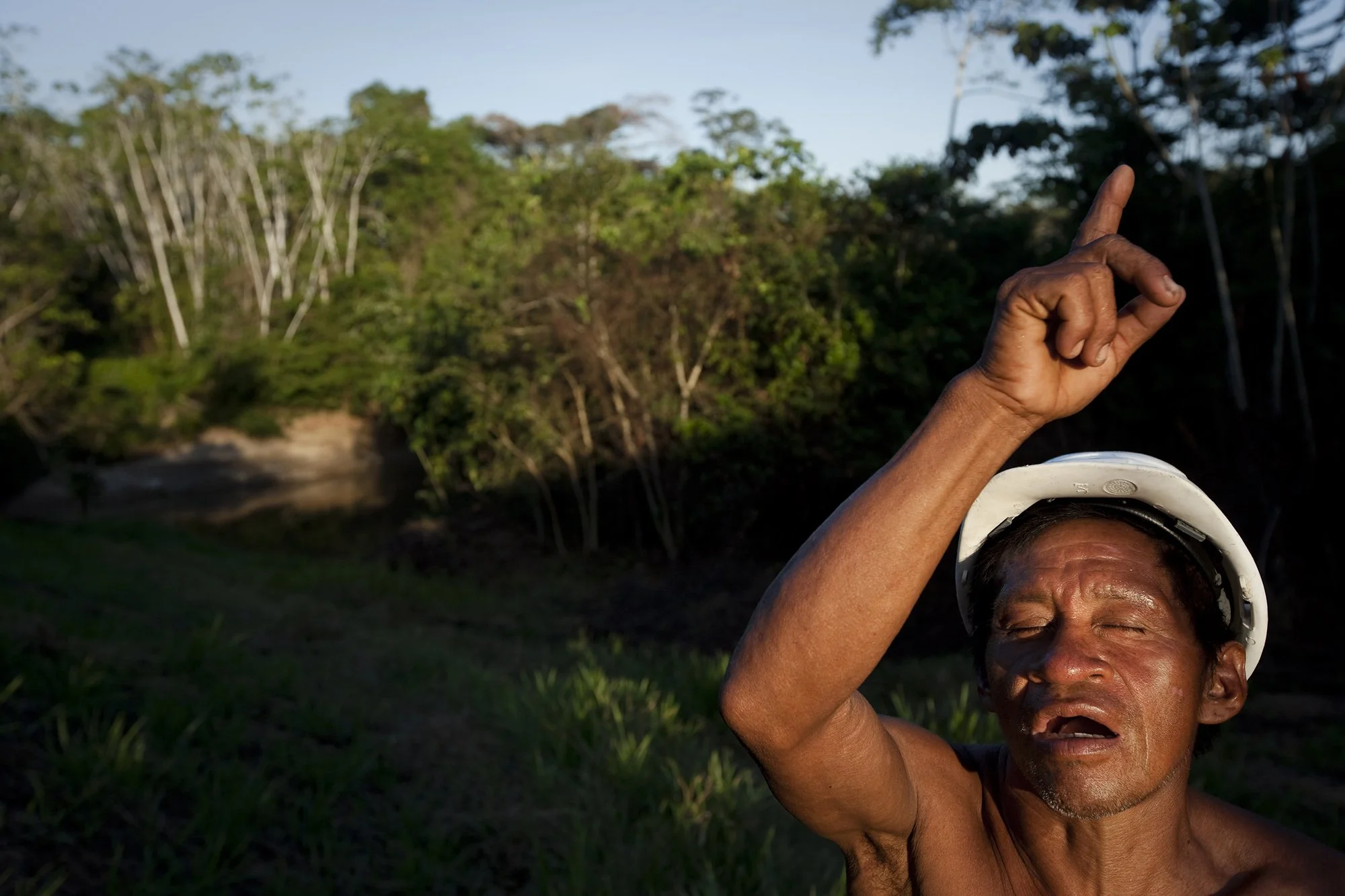

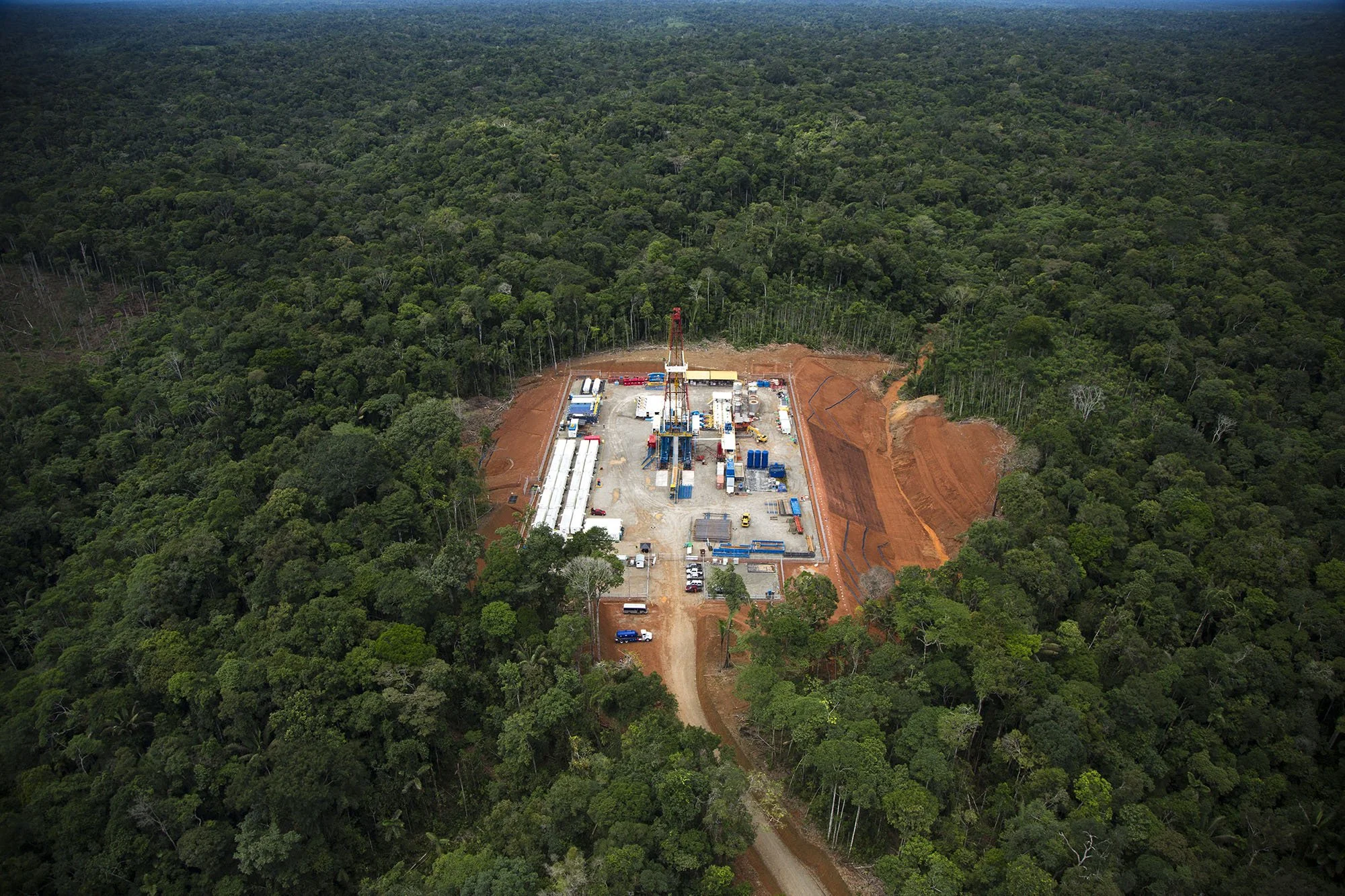
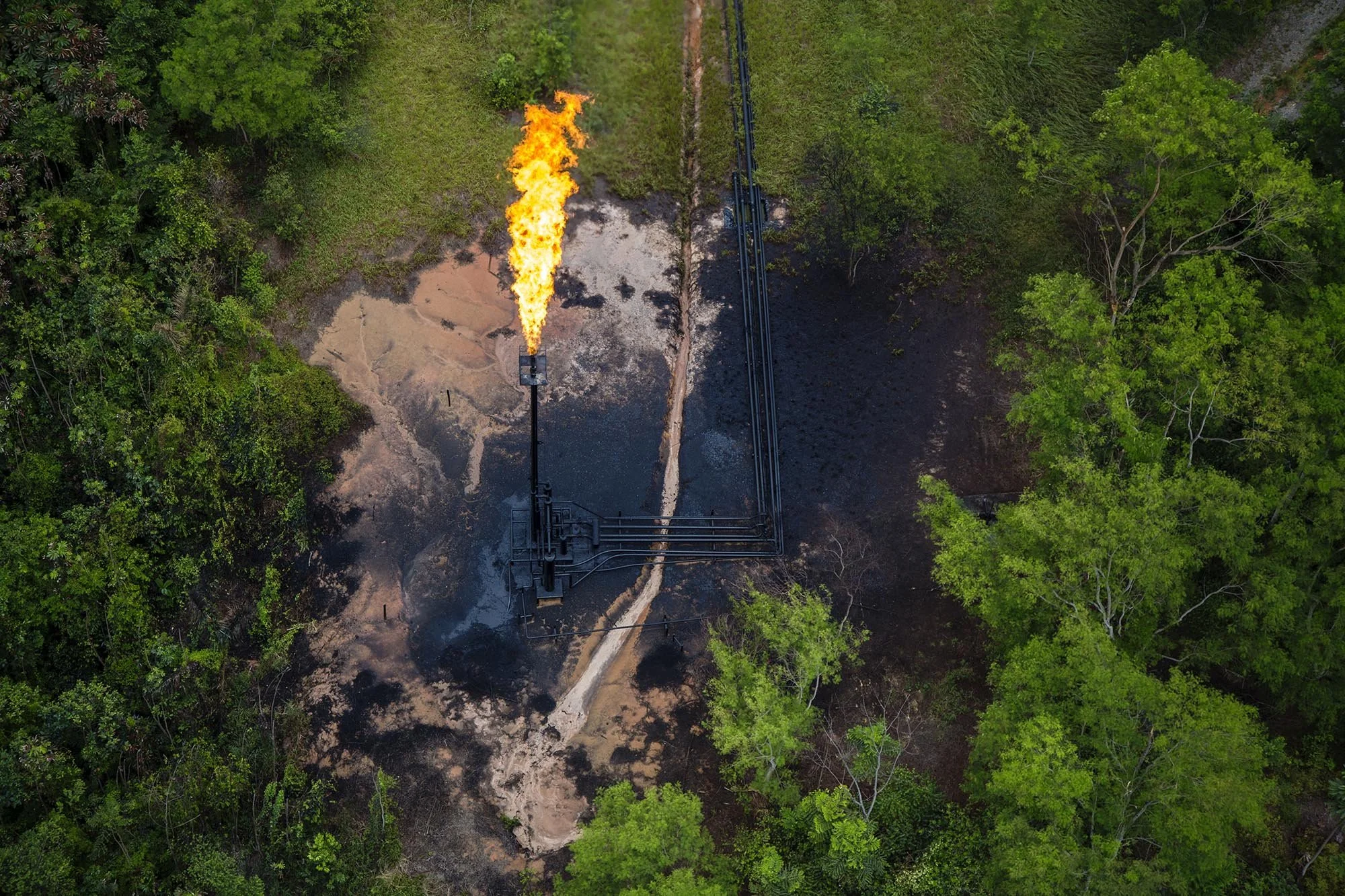
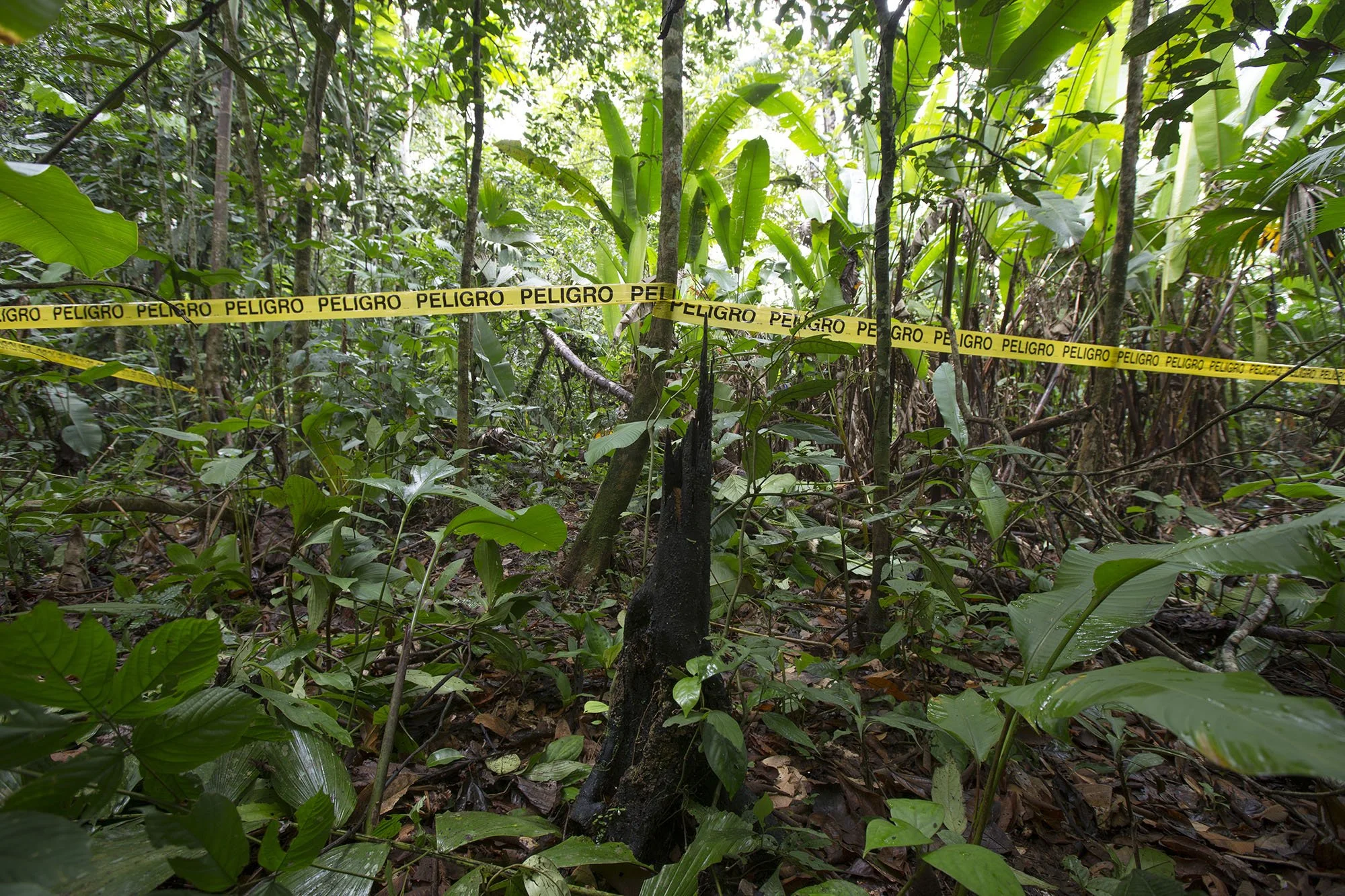
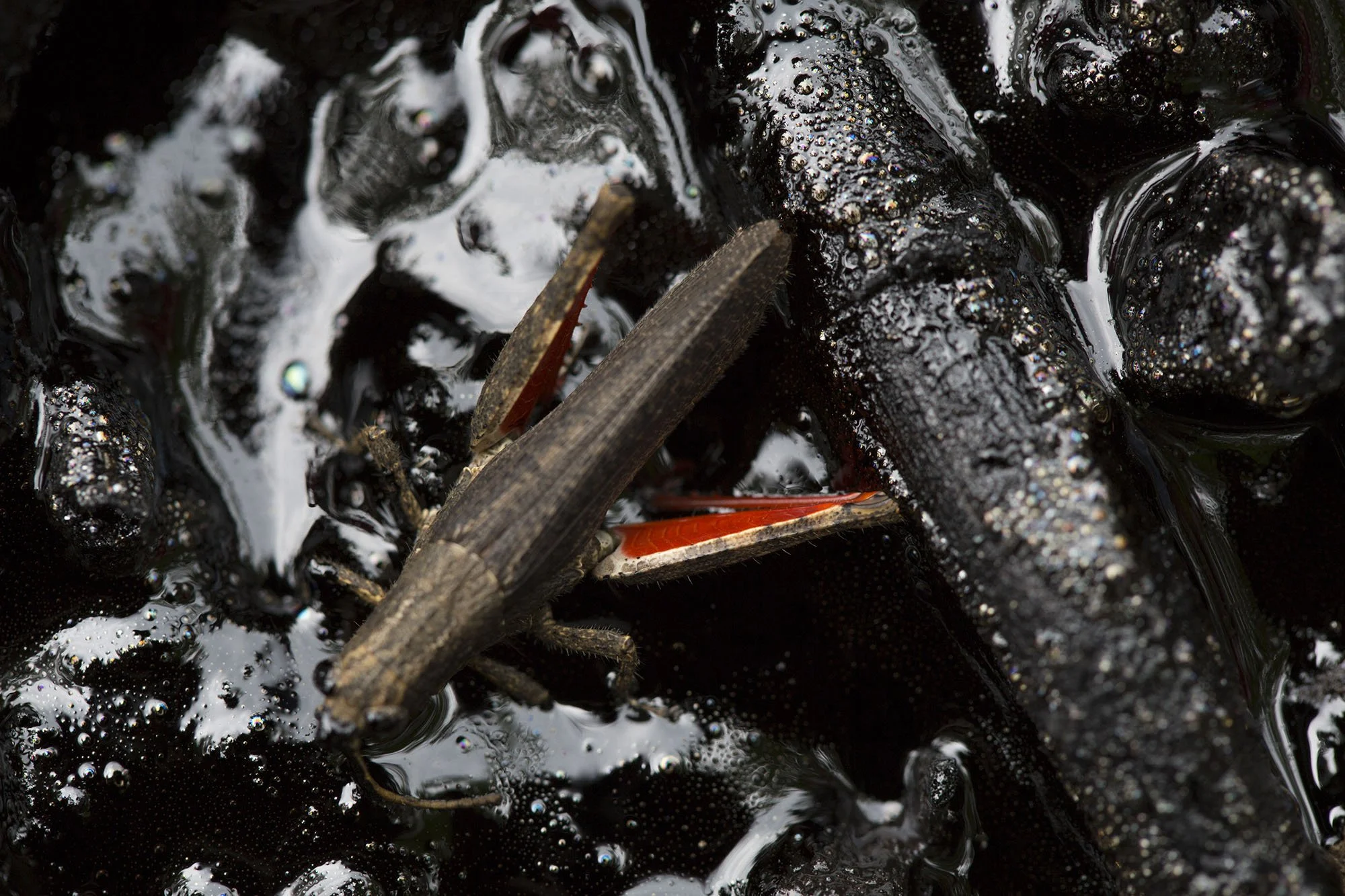



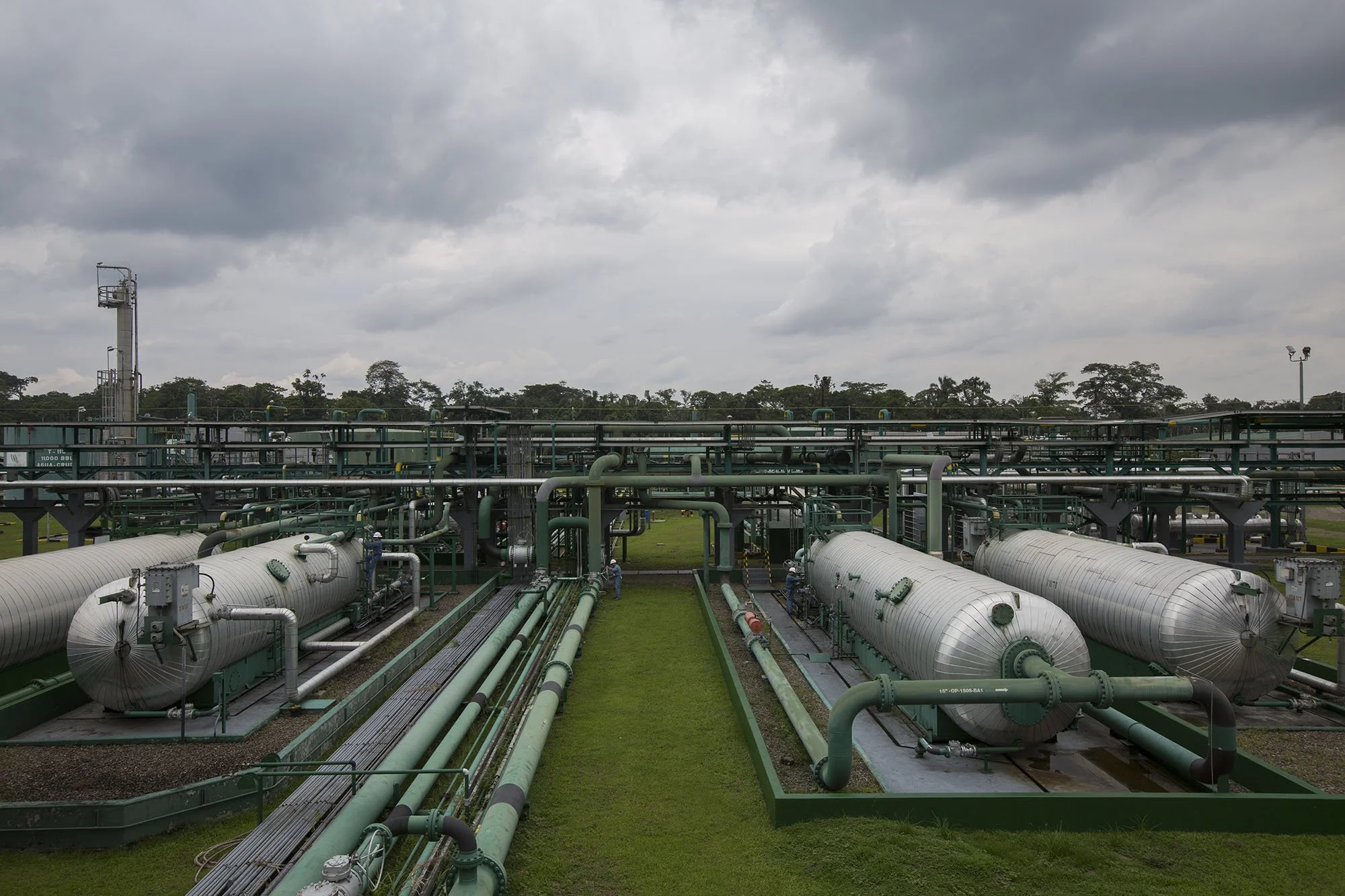
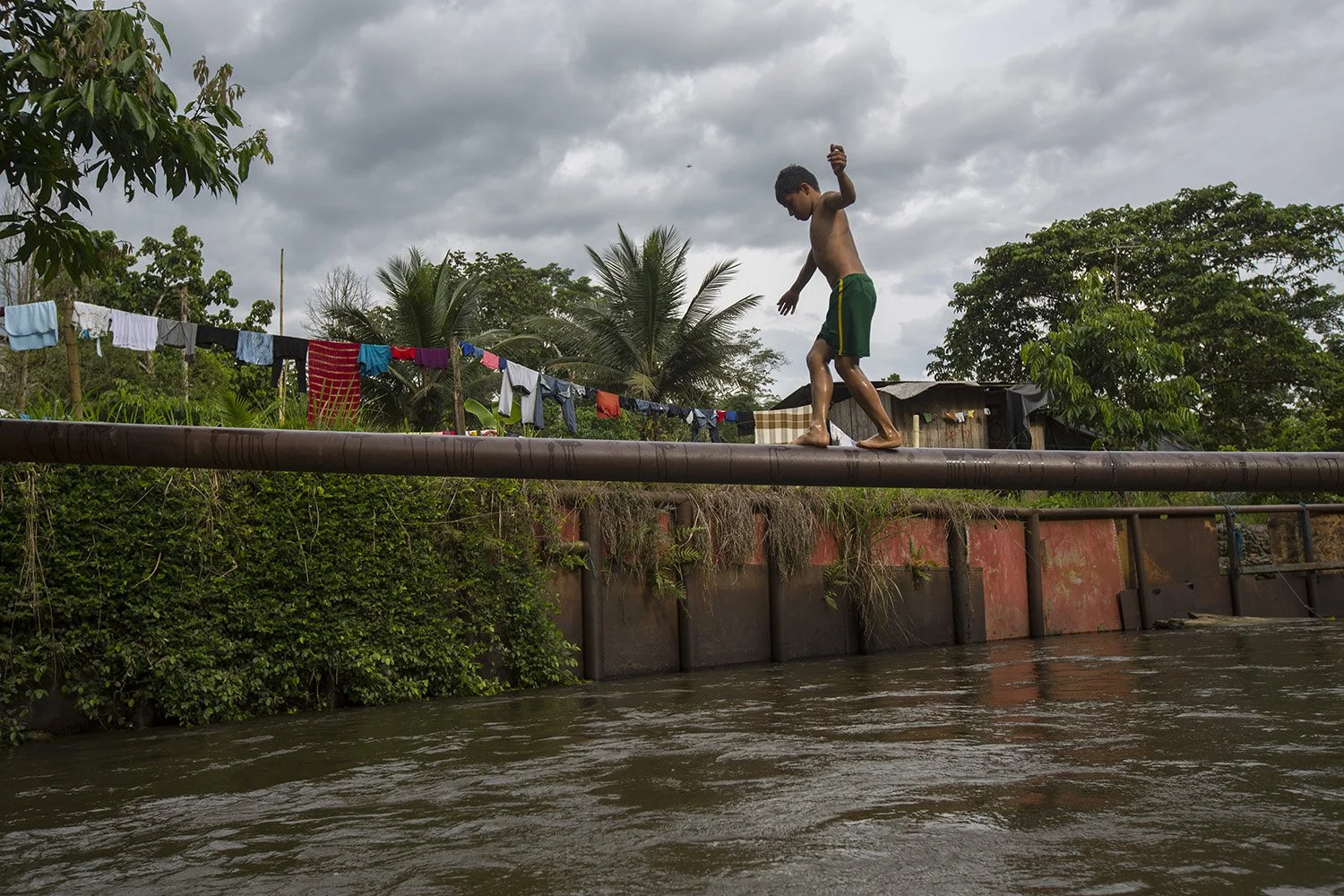
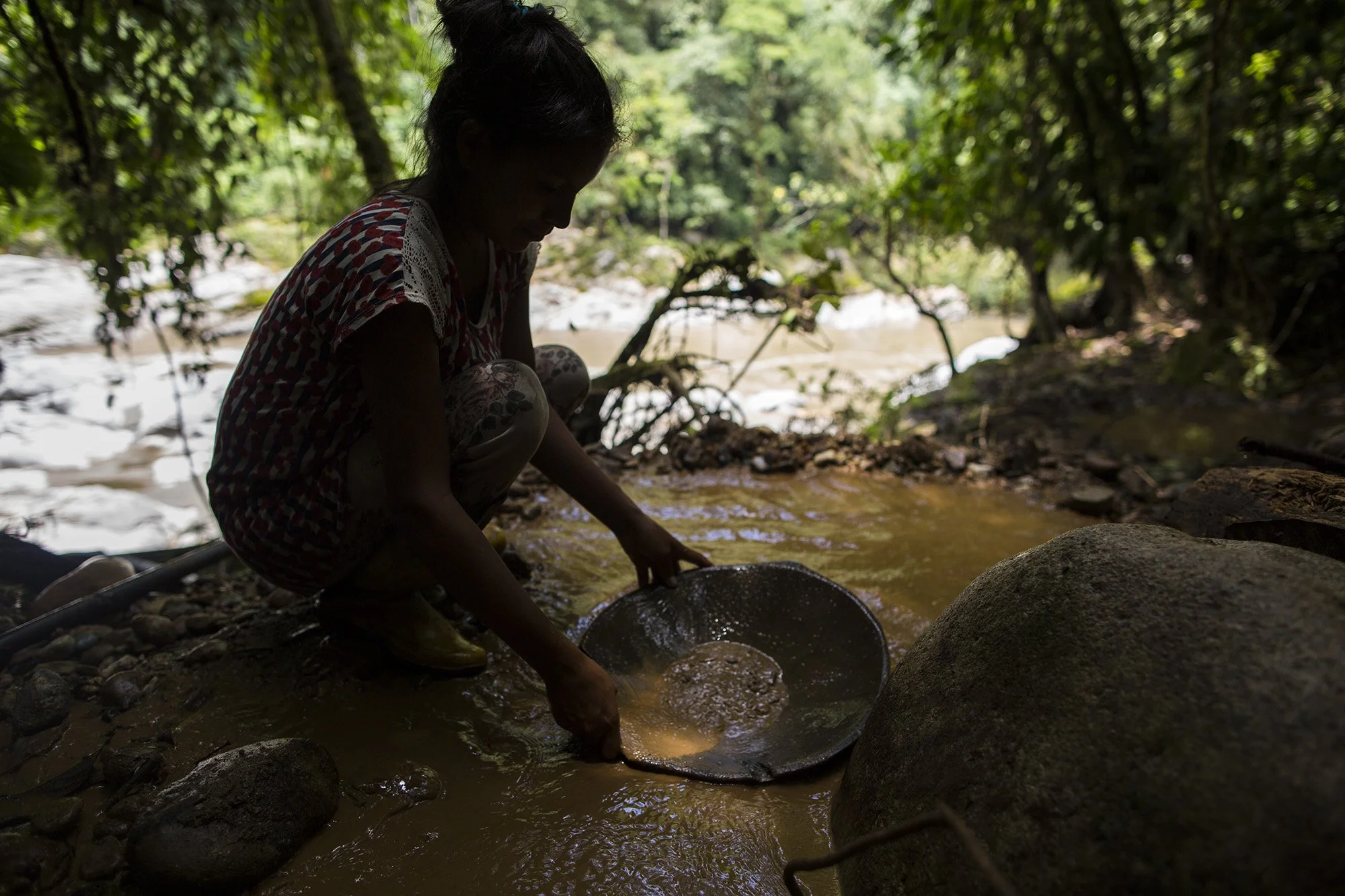

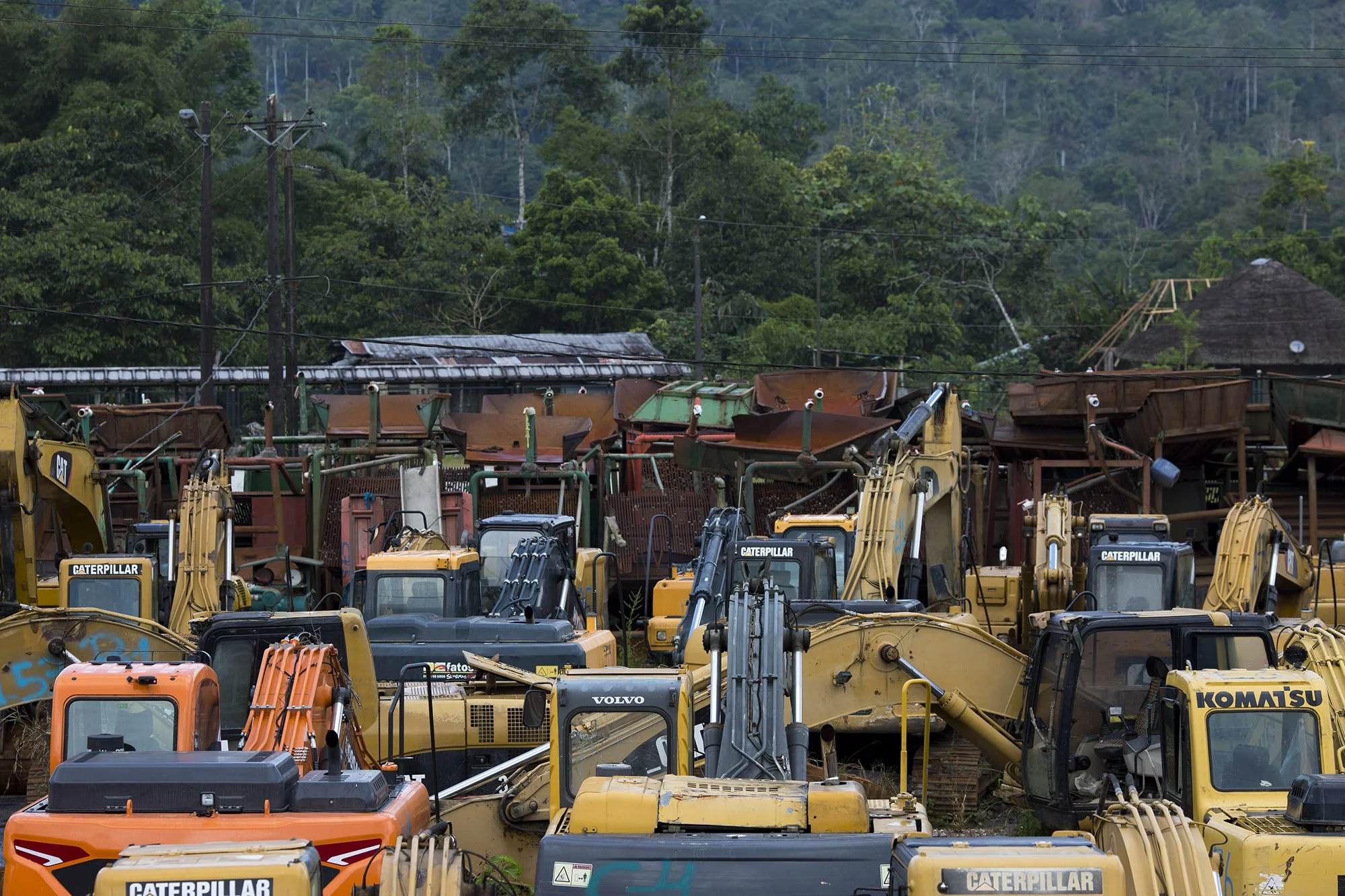



Since 2010, I have been walking through the Ecuadorian Amazon from its northern rivers to the southern mountains hidden deep in the jungle. Communities that protect their land, culture and principles invited me into their world. They guided me not only through the forest, but through their stories stories of strength, healing, and deep ancestral knowledge.

But in these same lands, I have also witnessed the wounds. The oil industry has left scars contaminated rivers, silent forests, invisible illnesses. And yet, even in the most devastated places, I still hear echoes: of laughter, of chants, of cacao grown in the wild, of a jungle that refuses to die.

Echoes of the Amazon is not just a photographic project. It’s a long-term journey to document both the beauty and the consequences both the life and the silence that follows exploitation. These are echoes that demand to be heard

The Amazon is called the "green sea" by its people. This image, taken from a small plane, reveals an endless ocean of forest alive, breathing, and sacred.

The Pastaza River flows through the eastern Andes into the Amazon Basin, crossing both highlands and rainforest. It has long been a vital artery for Indigenous communities such as the Achuar, Shuar, and Kichwa, who rely on its waters for transport, fishing, and spiritual rituals.
Historically, the river served as a natural route for explorers and missionaries during colonial times, and later for oil and timber industries. Despite modern pressures, the Pastaza remains a symbol of resistance, cultural identity, and ecological richness in Ecuador’s Amazon.

In the Amazon, some sacred sites are known as magnetic places locations with powerful natural energy. Indigenous healers believe these places amplify spiritual connection, enhance visions, and help in deep healing. Often found near waterfalls, ancient trees, or specific rock formations, they are respected as gateways between the physical and spiritual worlds.

An Indigenous person bathes in the river at night a ritual deeply tied to living alongside the dangers of the Amazon, where anacondas and caimans roam. The Amazon is a magical place, but also extremely dangerous if it does not accept you.

Dureno, Sucumbíos Emergildo Criollo Querama (left) and Martin Crecencio Criollo Mendua (right), members of the Cofan community, walk along pipelines from former Texaco operations on their way to the town of Dureno to do household shopping.

Yasuní National Park in Ecuador is one of the most biodiverse areas on Earth and home to isolated Indigenous groups like the Tagaeri and Taromenane, part of the Waorani people. Oil extraction threatens the region roads destroy forests, wildlife vanishes, and the Waorani way of life is disrupted.

A Shuar guide leads specialists through the underground caves of Amazonian ancestors sacred spaces hidden beneath the jungle, where ancient spirits and stories still echo in the stone.

Mothers always carry their babies with them. Children learn by watching their parents move through the forest feeling the current of the rivers. Learning happens naturally through observation and daily life.

Mothers always carry their babies with them. Children learn by watching their parents move through the forest, make fire, and hunt animals. Learning happens naturally through observation and daily life.

Traditional healers (curanderos) use ayahuasca to cleanse and heal Indigenous people after they return from the cities. The medicine helps them release harmful energies, restore balance, and reconnect with their roots after exposure to the chaos of the outside world.
Ayahuasca is not only a medicine it's a way to protect the soul and remember who you are.

Ayahuasca is a sacred medicine used by Indigenous Amazonian peoples for healing and spiritual vision. According to ancestral teachings, they learned how to make ayahuasca by watching the jaguars, who are seen as powerful spirit guides.
In ceremony, ayahuasca is used to heal the body, mind, and soul, allowing people to see the root of illness and to reconnect with nature, the ancestors, and each other.

Ancestral Cacao was used by Indigenous peoples of the Amazon and Mesoamerica not just as food, but as a sacred plant medicine. Long before colonization, some communities used cacao in ceremonies to connect with the gods, instead of ayahuasca.
Cacao opened the heart, brought emotional healing, and helped guide visions through love and clarity—a gentle but powerful spirit.

Wayusa is a sacred plant used by Indigenous families in the Ecuadorian Amazon, especially the Kichwa people. They drink it in the early morning during a ritual called guayusada, where families gather around the fire to share dreams, stories, and prepare for the day.
Wayusa provides natural energy (like green tea), supports digestion, and helps with mental clarity. It’s rich in antioxidants and used for spiritual connection, especially through dreams. It’s known as “the plant that makes you dream while awake.”

Shuar families continue to preserve their ancestral traditions, passing down their knowledge, languages, and sacred practices through generations. From healing rituals with plants to warrior songs and storytelling, their connection to the forest remains alive and strong.

Indigenous people are giving rapé (a traditional sacred snuff) to a man. In the Amazon, rapé is used in sacred sites, often called magnetic places, to clear the mind, open spiritual channels, and connect deeply with nature and ancestors.
Rapé helps with focus, healing, and grounding during rituals and ceremonies.

The first Indigenous homes were built entirely from plants of the rainforest palm leaves, lianas, bamboo, and wood. Designed with deep ecological knowledge, these homes were in harmony with nature, offering protection from rain, heat, and spirits, while leaving no trace behind.

A Shuar man prays over a dead puma, honoring the spirit of the animal. Indigenous peoples show deep respect for animals, believing that proper rituals help the spirit find peace and prevent it from following or haunting the living.

In Yasuni National Park, Ecuador, a Waorani man prays before entering the jungle, wearing a helmet gifted by oil companies. This image reflects the tension between Indigenous traditions and the intrusion of the oil industry into their ancestral lands.

Limoncocha 2, Sucumbíos an oil drilling site featuring the CCDC36 rig. This field is part of Ecuador’s oil extraction operations, located in the Amazon region, where petroleum exploration often clashes with environmental and Indigenous rights concerns.

Aerial photo taken from a helicopter of Panacocha oil field, showing the CCDC36 drilling rig. This site is part of Ecuador’s Amazon oil extraction operations, highlighting the industrial footprint deep in the rainforest.

Sucumbíos, Ecuador — During an aerial flight over the Aguarico River, we spotted a gas flare from an oil facility, burning day and night in the heart of the Amazon.

Sacha Well 53, Sucumbíos insects trapped in toxic waste pools left by Texaco’s oil operations. These hazardous ponds contaminate the environment, threatening wildlife and local communities in the Amazon.

Flying over Lago Agrio in a helicopter, I saw this toxic waste site from above. For once, they allowed us to enter and photograph something the public is almost never allowed to see.

Rusting scrap metal left behind by Chevron-Texaco still litters the oil fields, silent traces of decades of extraction.

A flare stack in Lago Agrio, part of the first oil installations set up by Texaco between 1964 and 1967. These early operations marked the beginning of large-scale oil extraction in Ecuador’s Amazon, with lasting environmental and social impacts.

Block 15 CPF, located between the provinces of Orellana and Sucumbíos, is a central processing facility where pipelines from nearby platforms converge. Here, crude oil is processed and separated into petroleum, gas, and water before further distribution.

In Recinto La Victoria, Sucumbíos, children play in the river just meters away from Texaco pipelines carrying crude oil. This close proximity highlights the environmental risks and health dangers faced by local communities living near oil infrastructure.

A woman separates mud from gold by hand, standing in the waters of the Napo River in the Amazon. While this ancient practice reflects survival and tradition, today gold exploitation has become a serious threat polluting rivers, destroying ecosystems, and endangering Indigenous communities.

A man operates a machine, extracting gold from the riverbed in the Amazon. Unlike traditional methods, these machines tear through the land, leaving behind toxic waste and muddy scars. Gold mining in the rainforest is accelerating deforestation and contaminating the rivers with mercury putting entire ecosystems and Indigenous lives at risk.

Illegal excavators used for gold mining were seized by police in the Napo region of the Amazon. These machines, often hidden deep in the forest, cause severe environmental destruction. The operation marks a rare moment of enforcement in a region heavily affected by illegal mining and river contamination.

Illegal gold excavators stuck in the river, spilling gold and causing pollution. These machines disrupt the riverbed, releasing toxic waste and harming the fragile Amazon ecosystem.

Illegal loggers abandon their camps when they see Indigenous people approaching. They fear them knowing they could be killed. Indigenous communities are tired of their lands being stolen, and many are now willing to defend them to the death.